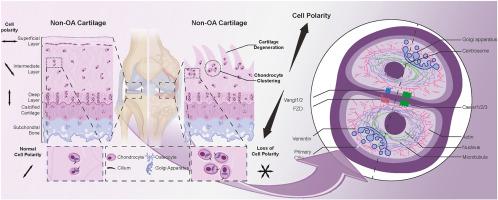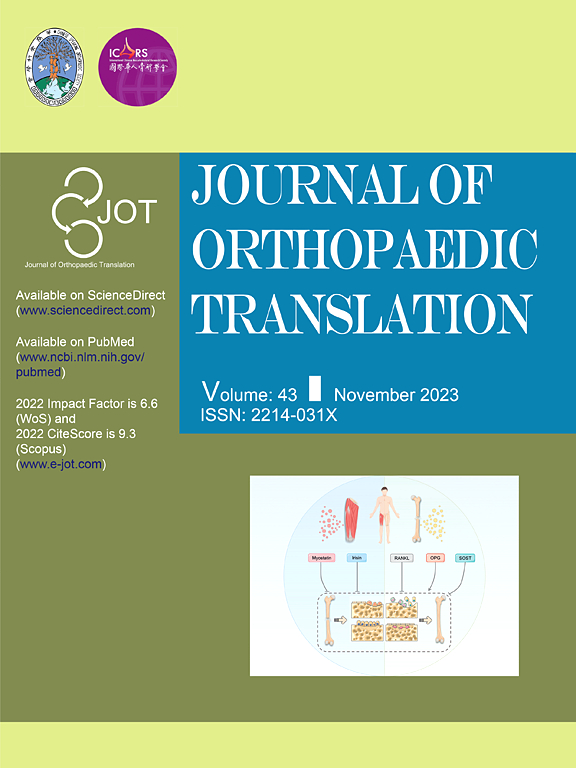From polarity to pathology: Decoding the role of cell orientation in osteoarthritis
IF 5.9
1区 医学
Q1 ORTHOPEDICS
引用次数: 0
Abstract
Cell polarity refers to the orientation of tissue and organelles within a cell and the direction of its function. It is one of the most critical characteristics of metazoans. The development, growth, and functional tissue distribution are closely related to holistic tissue or organ homeostasis. However, the connection between cell polarity and osteoarthritis (OA) is less well-known. In OA, multiple chondrocyte clusters and tissue disorganisation can be observed in the degraded cartilage tissue. The excessive upregulation of the planar cell polarity (PCP) signalling pathway leads to the loss of cell polarity and organisation in OA progression and aetiology. Recent research has become increasingly aware of the importance of cell polarity and its correlation with OA. Several cell polarity-related treatments have shed light on OA. A thorough understanding of cell polarity and OA would provide more insights for future investigations to treat this worldwide disease.
The translational potential of this article
Understanding cell polarity, associated signalling pathways, organelle changes, and cell movement in the development of OA could lead to advances in precision medicine and enhanced treatment strategies for OA patients.

从极性到病理学:解码细胞定向在骨关节炎中的作用
细胞极性是指细胞内组织和细胞器的定向及其功能的方向。它是元古宙最关键的特征之一。组织的发育、生长和功能分布与整体组织或器官的平衡密切相关。然而,细胞极性与骨关节炎(OA)之间的联系却鲜为人知。在 OA 中,退化的软骨组织中可观察到多软骨细胞簇和组织紊乱。平面细胞极性(PCP)信号通路的过度上调导致了细胞极性和组织性的丧失,从而引发了 OA 的发展和病因。近来的研究日益认识到细胞极性的重要性及其与 OA 的相关性。一些与细胞极性相关的治疗方法已对 OA 有所启示。本文的转化潜力了解细胞极性、相关信号通路、细胞器变化和细胞运动在OA发展过程中的作用,可促进精准医学的发展,并增强OA患者的治疗策略。
本文章由计算机程序翻译,如有差异,请以英文原文为准。
求助全文
约1分钟内获得全文
求助全文
来源期刊

Journal of Orthopaedic Translation
Medicine-Orthopedics and Sports Medicine
CiteScore
11.80
自引率
13.60%
发文量
91
审稿时长
29 days
期刊介绍:
The Journal of Orthopaedic Translation (JOT) is the official peer-reviewed, open access journal of the Chinese Speaking Orthopaedic Society (CSOS) and the International Chinese Musculoskeletal Research Society (ICMRS). It is published quarterly, in January, April, July and October, by Elsevier.
 求助内容:
求助内容: 应助结果提醒方式:
应助结果提醒方式:


